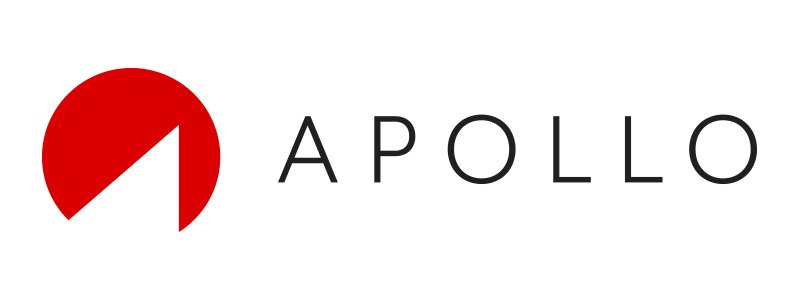Best Home Insurance Companies in Alberta
Pricing varies by product
British Columbia, Alberta, Saskatchewan, Manitoba, and Ontario
Pricing varies by product
All of Canada excluding Quebec
Alberta Home Insurance Requirements
First things first: who actually needs home insurance? Well, unlike auto insurance, home insurance is not a legal requirement in Alberta; technically this means that all homeowners and renters can choose not to purchase insurance.
However, if you have a mortgage on your home, your mortgage provider will almost certainly mandate a minimum level of home insurance coverage. And even if you don’t have a mortgage, or if you are renting, having home insurance is by far the safest and most responsible way to protect your assets and financial future.
Alberta Home Insurance Options
There are a couple of different types of property insurance available in Alberta; although all three are known as “home insuranceâ€, they are actually distinct. They are:


Homeowner’s Insurance
Homeowner’s insurance is what most people think of when they say “home insuranceâ€. This type of insurance covers the physical buildings that constitute a home (including detached structures), personal belongings within the home, and personal liability in the event that someone is injured on the property.
There are different levels of protection within homeowner’s insurance:
- No frills coverage
- Standard coverage
- Broad coverage
- Comprehensive coverage
As well as choosing the level of protection you want for your home via the level of policy you go for, it is also possible to have specific add-ons or endorsements - for example, if you live in a high risk area for a specific peril, such as flooding. In general, the more coverage you get, the more your insurance will cost.
Condo Insurance
Alberta’s two largest cities, Edmonton and Calgary, are home to booming condo markets, and condo insurance is the appropriate form of insurance for residents in these homes. Condo insurance is very like homeowner’s insurance, but it only covers the named unit within a condo building - not the larger building’s structure. The condo building itself will have its own insurance policy to cover the common areas and main structure of the property.
Tenant’s Insurance
Lastly, for those who don’t own their own home but who still want protection, there is tenant’s insurance. Tenant’s insurance does not cover the building in question, but it does cover your personal belongings within the building, as well as personal liability in the event that you cause damage to the building. Tenant’s insurance is much cheaper than homeowner’s or condo insurance.
Alberta Home Insurance Providers
Alberta is home to over 100 different insurance companies who offer different forms of property insurance. Many of these are national companies, though some are more local. Albertans searching for property insurance can go directly to one of these companies for help, or work with an insurance broker to find the best deal. Overwhelming, Albertans choose to search for, apply and purchase their home insurance online.
Alberta Home Insurance Costs
The average homeowner’s insurance policy in Alberta costs between $800 and $1,200 a year - or between $66 and $100 a month. This range reflects the difference that location, property size and coverage level can make on cost. Tenant’s insurance is in general much cheaper, averaging $25 a month.
There are a lot of factors that influence the exact cost of an insurance policy, including:
- Coverage type and level
- Property size
- Property value
- Exact location
- Distance to a fire hydrant
- Age of home
- Condition of home and internal construction type
- Existence of a basement, finished or unfinished
- Type of heating in the home
- Type of plumbing in the home
- Type of wiring in the home
- Type and age of roof
- Presence of smoke alarms, CO monitors and security systems
- Presence of pool
- Pets in the home
- Number of people resident in the home
- Value of personal belongings in the home
- Presence of high value items
- Policyholder information, including:
- Past claims history
- Credit score
Some of the above factors may seem incredibly specific, but all affect how an insurance company will calculate risks and the probability of claims. The lower risk you and your property are considered to be, the cheaper your insurance.
Frequently Asked Questions About Home Insurance in Alberta
How can I save on home insurance costs in Alberta?
Shopping around is the number one way to save on your home insurance, but you may also try:
- Bundling insurance policies
- Installing a fire alarm or security system
- Paying a higher deductible
- Paying for your policy annually rather than monthly
- Choosing a lower level of coverage
- Asking about discounts
Where can I get home insurance in Alberta?
Albertans must purchase their home insurance from one of the dozens of private insurance companies operating in the province. Some of these companies are listed in the table at the top of the page.
Can I get home insurance for a vacation home?
Yes, absolutely, and protecting your vacation home is important. You can often add vacation property coverage (or mobile home coverage) to your main homeowner’s insurance policy to save money. You can also take out a separate policy.
Who regulates home insurers in Alberta?
The Alberta Superintendent of Insurance regulates insurance providers in Alberta.
Who sets home insurance rates in Alberta?
Although Alberta’s insurers are regulated by a provincial authority, it is up to each individual insurer to calculate and set their own rates. This is why shopping around to find the best deal on your insurance actually works.
Are home insurance premiums tax deductible in Alberta?
No, unless you run a home business, in which case you will need business insurance coverage as well as your standard homeowner’s coverage. In this case, only the supplemental business insurance will be tax deductible.
Can an Albertan insurance company deny coverage?
Technically, yes, any individual insurance company can deny you coverage, but this is very rare. If you are denied, you can ask why and potentially solve the problem or find another provider.
What are the biggest property insurance risk factors in Alberta?
Alberta has seen some wild weather in the past decade, and is at increased risk for flooding, forest fires and extreme cold. These risks drive up the cost of insurance for everyone in the province, regardless of whether you’ve been affected by them personally.
Written By Smarter Loans Staff

The Smarter Loans Staff is made up of writers, researchers, journalists, business leaders and industry experts who carefully research, analyze and produce Canada's highest quality content when it comes to money matters, on behalf of Smarter Loans. While we cannot possibly name every person involved in the process, we collectively credit them as Smarter Loans Writing Staff. Our work has been featured in the Toronto Star, National Post and many other publications. Today, Smarter Loans is recognized in Canada as the go-to destination for financial education, and was named the "GPS of Fintech Lending" by the Toronto Star.
Discover Popular Financial Services
Why Choose Smarter Loans?

Access to Over 50 Lenders in One Place

Transparency in Rates & Terms

100% Free to Use

Apply Once & Get Multiple Offers

Save Time & Money

Expert Tips and Advice













